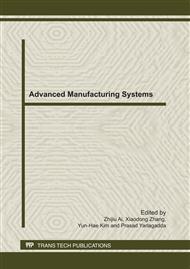p.521
p.526
p.533
p.538
p.543
p.547
p.553
p.557
p.561
Numerical Study of Oil-Water Two Phase Separation in Hydrocyclone
Abstract:
This paper presents a numerical study of the oil-water two phase flow in hydrocyclone. Oil-water two phase separation was simulated by using Reynolds Stress Model and Mixer model of multi-phase models. The oil-water separation process, oil-phase volume fraction distribution, and trajectory about the water-oil two phase liquid flowing within hydrocyclone were obtained. The study show that the separation of water-oil two phases is mainly in the swirl-chamber and cone section in hydrocyclone, however, the cylindrical section plays an inessential role in stabilizing the flow field during separation process.
Info:
Periodical:
Pages:
543-546
Citation:
Online since:
September 2011
Authors:
Keywords:
Price:
Сopyright:
© 2011 Trans Tech Publications Ltd. All Rights Reserved
Share:
Citation:


